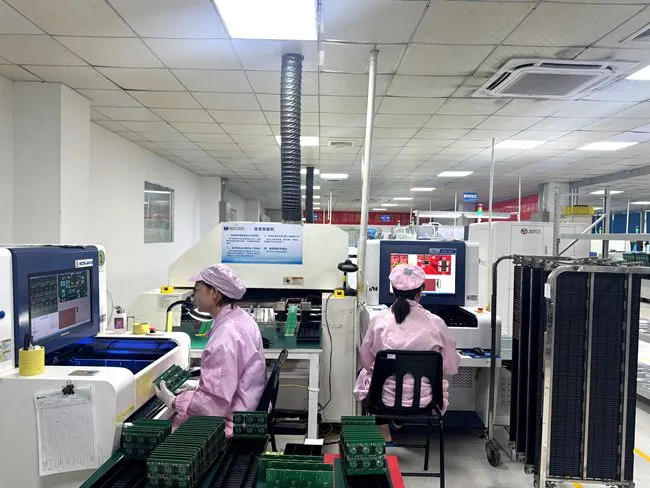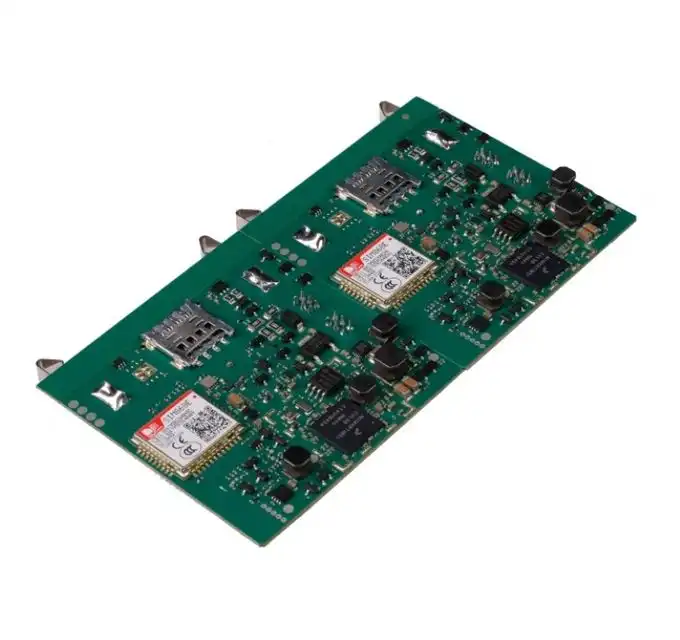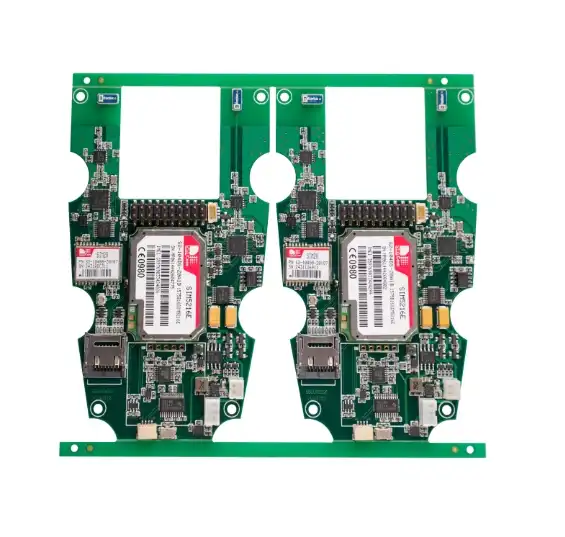The Evolution of AOI Technology in PCB Assembly
AOI technology has undergone a remarkable transformation since its inception, revolutionizing the PCB assembly landscape. Initially developed to augment manual inspection processes, AOI systems have evolved into sophisticated machines capable of examining complex multilayer boards with unprecedented precision. This technological advancement has been driven by the increasing intricacy of electronic devices and the demand for higher quality standards in industries ranging from automotive to aerospace.
Modern AOI inspection equipment utilizes high-resolution cameras and advanced illumination techniques to capture detailed images of PCB assemblies. These images are then analyzed using complex algorithms that can detect anomalies as small as a few micrometers. The integration of artificial intelligence and machine learning has further enhanced the capabilities of AOI systems, enabling them to adapt to new component types and learn from previous inspection data.
Key Features of Advanced AOI Systems
- Multi-angle inspection for comprehensive defect detection
- High-speed image processing for rapid throughput
- Automated defect classification and reporting
- Integration with production line management systems
- Adaptive learning algorithms for continuous improvement
The evolution of AOI technology has not only improved the accuracy of PCB inspection but has also significantly increased the speed at which boards can be examined. This has allowed manufacturers to implement 100% inspection protocols without sacrificing production efficiency, a crucial factor in meeting the demanding schedules of modern electronics manufacturing.
Impact of AOI on PCB Assembly Yield
The implementation of AOI inspection in PCB assembly lines has had a profound impact on manufacturing yield. By detecting defects early in the production process, AOI systems prevent faulty boards from progressing through subsequent assembly stages, where issues become more costly and time-consuming to rectify. This early intervention capability is particularly valuable in high-density interconnect (HDI) and microvia board production, where the complexity of designs makes manual inspection impractical and error-prone.
AOI's contribution to yield improvement extends beyond mere defect detection. The data collected during inspection provides invaluable insights into the assembly process, enabling manufacturers to identify recurring issues and implement targeted process improvements. This data-driven approach to quality management has led to substantial reductions in defect rates and corresponding increases in first-pass yield.
Quantifiable Benefits of AOI Implementation
- Reduction in escape rates by up to 90%
- Increase in first-pass yield by 15-20%
- Decrease in rework costs by 30-40%
- Improvement in overall equipment effectiveness (OEE)
Moreover, the consistency of AOI inspection eliminates the variability inherent in manual inspection processes. This uniformity ensures that quality standards are maintained across production runs, regardless of shifts or operator changes. The result is a more stable and predictable assembly process, which is crucial for meeting the stringent quality requirements of industries such as medical devices and aerospace.
Enhancing PCB Reliability Through AOI
The role of AOI in enhancing PCB reliability extends far beyond the production line. By ensuring that only high-quality boards progress to final assembly and testing, AOI significantly reduces the likelihood of field failures and warranty claims. This is particularly critical in applications where PCB failure could have catastrophic consequences, such as in automotive safety systems or medical equipment.
AOI inspection systems are uniquely positioned to detect subtle defects that may not immediately affect functionality but could lead to premature failure under operational stress. These include minor solder joint imperfections, slight component misalignments, and barely visible contamination. By capturing these issues during production, manufacturers can address potential reliability concerns before products are deployed in the field.
Long-term Reliability Improvements
- Reduction in infant mortality rates of assembled PCBs
- Extended product lifespan due to higher initial quality
- Improved performance under extreme environmental conditions
- Enhanced reputation for product reliability and customer satisfaction
Furthermore, the data collected by AOI systems over time contributes to a deeper understanding of failure modes and mechanisms. This knowledge feeds back into the design process, enabling engineers to create more robust PCB layouts and select components with proven reliability. The result is a continuous improvement cycle that elevates the overall reliability of electronic products across industries.
Conclusion
AOI inspection has become an indispensable tool in modern PCB assembly, driving significant improvements in both yield and reliability. As electronic devices continue to shrink in size while growing in complexity, the role of AOI in ensuring product quality will only become more critical. Manufacturers and suppliers who invest in advanced AOI technology position themselves at the forefront of the industry, capable of delivering high-quality, reliable PCBs that meet the exacting standards of today's electronic products. By partnering with experienced PCB assembly suppliers who utilize state-of-the-art AOI systems, OEMs can ensure their products benefit from the latest advancements in quality assurance technology.

FAQ
What types of defects can AOI inspection detect?
AOI can detect a wide range of defects including component misalignment, solder bridging, missing components, incorrect polarity, and solder joint issues.
How does AOI compare to manual inspection?
AOI is faster, more consistent, and can detect smaller defects than manual inspection. It also provides quantifiable data for process improvement.
Is AOI suitable for all types of PCBs?
While AOI is highly versatile, it's particularly valuable for complex, high-density boards where manual inspection is impractical.
Comprehensive PCB Assembly and Inspection Services | Ring PCB
At Ring PCB, we offer a complete suite of PCB manufacturing and assembly services, including advanced AOI inspection. Our one-stop solution encompasses PCB fabrication, component sourcing, SMT assembly, and rigorous quality control. With our expertise in complex multilayer and HDI PCBs, we ensure high reliability and yield for all your projects. Contact us at [email protected] to experience our industry-leading PCB assembly and inspection services from a trusted manufacturer and supplier.
References
1. Smith, J. (2022). "Advancements in Automated Optical Inspection for PCB Assembly". Journal of Electronics Manufacturing, 15(3), 123-135.
2. Johnson, R., & Lee, S. (2021). "Impact of AOI on PCB Assembly Yield: A Comparative Study". International Conference on Electronics Assembly Technology, 287-294.
3. Williams, A. (2023). "Enhancing PCB Reliability through Advanced Inspection Techniques". Reliability Engineering & System Safety, 218, 108145.
4. Chen, X., et al. (2022). "Machine Learning Algorithms in Modern AOI Systems for PCB Inspection". IEEE Transactions on Industrial Electronics, 69(8), 8234-8243.
5. Taylor, M. (2021). "The Role of AOI in Industry 4.0 PCB Manufacturing". Smart Manufacturing, 6(2), 45-52.






